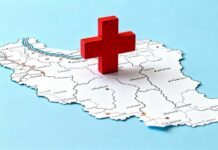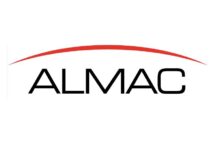In Phase 3 Open-Label STRUCTURE Study Postmenopausal Women With Osteoporosis Transitioning From Oral Bisphosphonates to Romosozumab Experienced Consistent and Significant Gains in Bone Mass and Estimated Strength Over Teriparatide.
World pharma today/Research inside/-Amgen and UCB announced detailed Phase 3 results showing the investigational agent romosozumab demonstrated a statistically significant increase in hip bone mineral density (BMD) and strength compared with teriparatide in postmenopausal women with osteoporosis transitioning from bisphosphonate treatment. The data, from the randomized, open-label, international, multi-center STRUCTURE study (STudy evaluating effect of RomosozUmabCompared with Teriparatide in postmenopaUsal women with osteoporosis at high risk for fracture pReviously treated with bisphosphonatE therapy), were presented during an oral session at ENDO 2016, the Endocrine Society’s 98th Annual Meeting & Expo in Boston.
Bente Langdahl, Ph.D., DMSc, professor at the department of endocrinology and internal medicine at the Aarhus University Hospital in Denmark and STRUCTURE investigator said that these findings are especially important because they show romosozumab provided significant improvements in hip bone strength in a population that remained at high risk of fracture despite bisphosphonate therapy.
Across the primary and secondary endpoints, patients transitioning from oral bisphosphonates to romosozumab showed consistent and significant gains in bone mass and estimated strength over teriparatide. At the hip, patients transitioning to teriparatide showed either no gains or significant decreases in these parameters.
The trial included 436 women, averaging 72 years of age, with postmenopausal osteoporosis, a history of non-vertebral fracture after the age of 50, or vertebral fracture and treatment with bisphosphonate therapy for a minimum of three years prior to transitioning to romosozumab or teriparatide therapy. The women were randomly assigned to receive either subcutaneous romosozumab 210 mg once monthly (n=218) or subcutaneous teriparatide 20 mcg daily for 12 months (n=218).
The results showed that the percent change from baseline in BMD at the total hip through month 12 (the primary endpoint, an average of the percent change from baseline at month six and 12), was significantly greater with romosozumab compared with teriparatide: 2.6 percent versus –0.6 percent, respectively (p<0.0001), for a mean difference between the two groups of 3.2 percent (p<0.0001). The measurement was based on the standard method of dual-energy x-ray absorptiometry (DXA).
For the secondary endpoints, patients treated with romosozumab had significantly larger increases from baseline in BMD and strength compared with those taking teriparatide, with mean differences ranging from 3.1 percent to 4.6 percent (all p-values <0.0001):
The overall incidence of adverse events was generally balanced between the two study arms. Incidence of all adverse events in patients treated with romosozumab was 75.2 percent compared to 69.2 percent with teriparatide. Serious adverse events occurred in 7.8 percent of patients treated with romosozumab compared to 10.7 percent for teriparatide. Adverse events reported in the romosozumab arm greater than or equal to 10 percent of patients were arthralgia and nasopharyngitis. Injection site reactions were reported in 7.8 percent.
About Romosozumab
Romosozumab is an investigational bone-forming agent and is not approved by any regulatory authority for the treatment of osteoporosis. It is designed to work by inhibiting the protein sclerostin, and has a dual effect on bone, both increasing bone formation and decreasing bone breakdown. Romosozumab is being studied for its potential to reduce the risk of fractures in an extensive global Phase 3 program. This program includes two large fracture trials comparing romosozumab to either placebo or active comparator in more than 10,000 postmenopausal women with osteoporosis.Amgen and UCB are co-developing romosozumab.
About the STRUCTURE study (NCT01796301)
STRUCTURE (STudy evaluating effect of RomosozUmab Compared with Teriparatide in postmenopaUsal women with osteoporosis at high risk for fracture pReviously treated with bisphosphonatE therapy) was a Phase 3, multi-center, international, randomized, open-label, teriparatide-controlled study that evaluated safety, tolerability and efficacy of romosozumab in women with postmenopausal osteoporosis. The trial included 436 postmenopausal women averaging 72 years of age who had postmenopausal osteoporosis and a history of bone fracture; patients were treated with bisphosphonate therapy for a minimum of three years prior to screening, with treatment with alendronate (70 mg weekly or equivalent) during the year immediately prior to screening. The women received daily calcium and vitamin D and were randomly assigned to receive either subcutaneous romosozumab 210 mg once monthly (n=218), administered by a healthcare professional, or self-administered subcutaneous teriparatide 20 mcg daily for 12 months (n=218).
The primary endpoint was percent change from baseline in total hip BMD by DXA through month 12 (average of the changes at months six and 12). Key secondary endpoints included percent change from baseline at months six and 12 in total hip BMD by DXA; hip integral and cortical BMD by quantitative computed tomography (QCT), a method to measure BMD changes in three dimensions; and estimated hip strength by finite element analysis (FEA). FEA is a validated method that utilizes QCT scans to simulate compression overload to estimate vertebral strength, and a sideways fall to estimate femoral strength. Other secondary endpoints included lumbar spine and femoral neck BMD by DXA at months six and 12.
About Osteoporosis
Osteoporosis affects many women after menopause as their ability to form new bone cannot counter balance the rate at which bone is being removed.1,2 This bone loss leads to weakened bones over time, increasing the potential for a break.3
It is estimated that one in three women over the age of 50 will experience an osteoporotic fracture.4,5 Patients who experience an osteoporosis-related fracture are twice as likely to experience a future fracture.6
The World Health Organization has officially declared osteoporosis a public health crisis,7,8 and the International Osteoporosis Foundation urges governments worldwide to make osteoporosis a healthcare priority.9
About Amgen
Amgen is committed to unlocking the potential of biology for patients suffering from serious illnesses by discovering, developing, manufacturing and delivering innovative human therapeutics. This approach begins by using tools like advanced human genetics to unravel the complexities of disease and understand the fundamentals of human biology.
Amgen focuses on areas of high unmet medical need and leverages its biologics manufacturing expertise to strive for solutions that improve health outcomes and dramatically improve people’s lives. A biotechnology pioneer since 1980,Amgen has grown to be one of the world’s leading independent biotechnology companies, has reached millions of patients around the world and is developing a pipeline of medicines with breakaway potential.For more information, visit www.amgen.com
About UCB
UCB, Brussels, Belgium (www.ucb.com) is a global biopharmaceutical company focused on the discovery and development of innovative medicines and solutions to transform the lives of people living with severe diseases of the immune system or of the central nervous system. With more than 8500 people in approximately 40 countries, the company generated revenue of € 3.3 billion in 2014. UCB is listed on Euronext Brussels (symbol: UCB).
CONTACT: Amgen, Thousand Oaks
Kristen Davis, 805-447-3008 (media)
Kristen Neese, 805-313-8267 (media)
Arvind Sood, 805-447-1060 (investors)
CONTACT: UCB, Brussels
France Nivelle, Global Communications, UCB
T +32.2.559.9178, france.nivelle@ucb.com
Laurent Schots, Media Relations, UCB
T+32.2.559.92.64, Laurent.schots@ucb.com
Antje Witte, Investor Relations, UCB
T +32.2.559.94.14, antje.witte@ucb.com
1 U.S. Department of Health and Human Services, Office of the Surgeon General. The 2004 Surgeon General’s Report on Bone Health and Osteoporosis: What It Means to You.http://www.ncbi.nlm.nih.gov/books/NBK45513/pdf/Bookshelf_NBK45513.pdf. Published October 14, 2004. Accessed February 2016.
2 National Osteoporosis Foundation. Clinician’s Guide to Prevention and Treatment of Osteoporosis.http://nof.org/files/nof/public/content/file/344/upload/159.pdf. Published January 2010. Accessed February 2016.
3 International Osteoporosis Foundation. What Is Osteoporosis? 2015. Available at: http://www.iofbonehealth.org/what-is-osteoporosis. Accessed February 2016.
4 International Osteoporosis Foundation. The Global Burden of Osteoporosis. What you need to know. Available at: http://www.iofbonehealth.org/data-publications/fact-sheets/what-you-need-know-about-osteoporosis. Accessed February 2016.
5 International Osteoporosis Foundation. Osteoporosis in the European Union in 2008: Ten years of progress and ongoing challenges (October 2008). Available at:http://www.iofbonehealth.org/sites/default/files/PDFs/EU%20Reports/eu_report_2008.pdf. Accessed February 2016.
6 International Osteoporosis Foundation. Stop at One. One Fracture Leads to Another.http://share.iofbonehealth.org/WOD/2012/patient_brochure/WOD12-patient_brochure.pdf. Accessed February 2016.
7 International Osteoporosis Foundation. The National Coalition for Osteoporosis and Related Bone Diseases Briefed Congress on Action Plan for a National Vision for Bone Health. Available at http://nof.org/news/157. Accessed February 2016.
8 The World Health Organization. Bulletin of the World Health Organization. Exercise interventions: defusing the world’s osteoporosis time bomb. Available at: http://www.who.int/bulletin/volumes/81/11/mingchanwa1103.pdf. Accessed February 2016.
9 International Osteoporosis Foundation. Global Initiatives. Available at http://www.iofbonehealth.org/global-initiatives-0. Accessed February 2016.
To view the original version on PR Newswire, visit:http://www.prnewswire.com/news-releases/amgen-and-ucb-present-positive-data-at-endo-2016-comparing-romosozumab-with-teriparatide-300244852.html


















